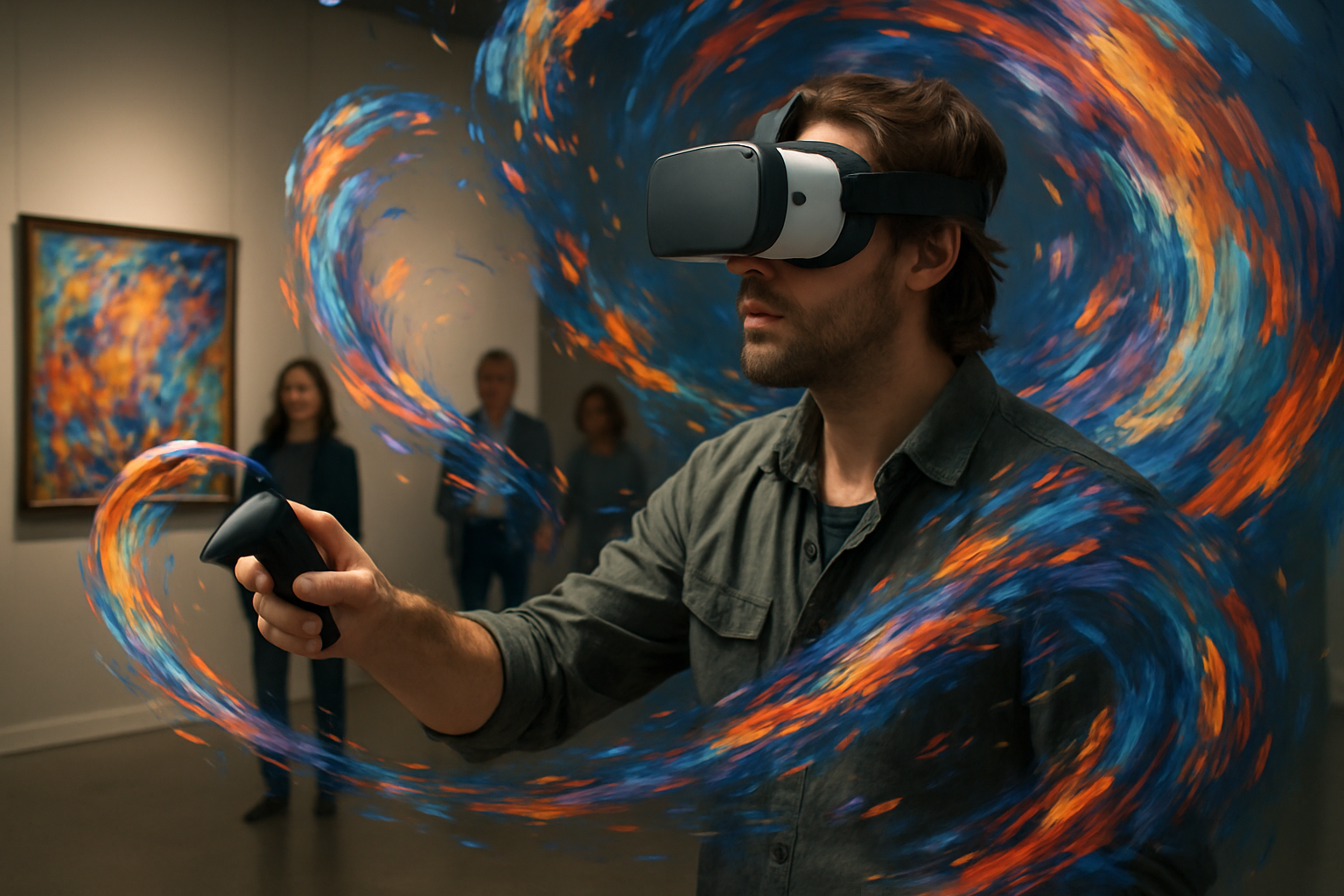Virtual Reality Art Galleries: Redefining Exhibition Spaces
In the ever-evolving landscape of contemporary art, virtual reality (VR) art galleries are emerging as a groundbreaking frontier, reshaping how we experience and interact with artistic creations. This digital revolution is not just transforming exhibition spaces but also challenging traditional notions of art appreciation, curation, and accessibility. As technology continues to advance, VR galleries are opening up new possibilities for artists, curators, and art enthusiasts alike, promising a future where geographical boundaries and physical limitations no longer constrain the world of art.

Reimagining the Gallery Experience
VR art galleries offer an immersive experience that transcends the limitations of physical spaces. Visitors can explore vast, imaginative environments that defy real-world constraints, allowing for exhibitions that would be impossible to create in traditional galleries. From floating through surrealist landscapes to interacting with three-dimensional sculptures in zero gravity, these virtual spaces offer unprecedented freedom in artistic expression and viewer engagement.
Accessibility and Global Reach
One of the most significant advantages of VR galleries is their potential to democratize access to art. Geographic location and physical mobility are no longer barriers to experiencing world-class exhibitions. Art enthusiasts from around the globe can visit virtual galleries from the comfort of their homes, accessing collections and installations that might otherwise be out of reach. This global accessibility not only broadens the audience for artists but also fosters a more inclusive and diverse art community.
Curatorial Innovation and Artist Empowerment
Virtual reality is revolutionizing the way curators approach exhibition design. In VR spaces, curators have unlimited creative freedom to experiment with layout, scale, and context. They can create dynamic, interactive experiences that respond to viewer behavior, offering personalized journeys through art collections. For artists, VR galleries provide new avenues for expression and experimentation. Digital artists can create works specifically designed for virtual spaces, while traditional artists can explore new ways to present their physical creations in digital environments.
Challenges and Future Prospects
Despite its potential, the world of VR art galleries faces several challenges. Issues of digital preservation, copyright protection, and the authenticity of virtual experiences are ongoing concerns. Additionally, the technology required for high-quality VR experiences remains relatively expensive and inaccessible to many. However, as VR technology continues to advance and become more widespread, these hurdles are likely to diminish.
The Intersection of Art and Technology
The rise of VR art galleries represents a fascinating convergence of art and technology. This intersection is pushing the boundaries of creative expression and challenging our perceptions of what constitutes an art experience. As virtual and augmented reality technologies continue to evolve, we can expect to see even more innovative approaches to art creation, curation, and appreciation.
Economic Implications for the Art Market
Virtual reality galleries are not just changing how we experience art; they’re also reshaping the economics of the art world. Digital art sales, including NFTs (Non-Fungible Tokens), have gained significant traction in recent years, with some virtual artworks fetching millions of dollars. VR galleries provide a new platform for showcasing and selling digital art, potentially disrupting traditional art market models and creating new revenue streams for artists and galleries.
The Role of AI in Virtual Curation
Artificial intelligence is playing an increasingly important role in the curation of virtual art galleries. AI algorithms can analyze viewer preferences, track engagement patterns, and even generate personalized exhibition layouts. This technology offers the potential for highly tailored art experiences, where each visitor’s journey through a virtual gallery is uniquely crafted to their interests and viewing habits.
Educational Potential of VR Art Spaces
Virtual reality art galleries hold immense potential as educational tools. They can offer interactive learning experiences that bring art history to life, allowing students to step into recreations of famous artworks or historical periods. Museums and educational institutions are exploring ways to integrate VR galleries into their curricula, providing immersive, engaging ways to study art and culture.
The Future of Art Appreciation
As we look to the future, it’s clear that virtual reality art galleries will play a significant role in shaping how we interact with and appreciate art. While they may never fully replace the experience of standing before a physical artwork, VR galleries offer complementary experiences that expand our understanding and enjoyment of art. The continued evolution of this technology promises to bring about new forms of artistic expression, viewer engagement, and cultural exchange, heralding an exciting new era in the world of art.





